GRID Legends Review
Every race tells a story. One that begins with drivers on a grid, progresses through that chaotic first corner, endures lead changes and accidents, and finally declares a victor. Motorsport enthusiasts also know that there is a story off the track, involving contracts, rivalries, mechanical issues, and injuries. Despite this, many racing games forgo anything resembling an off-track narrative. Popular franchises like Gran Turismo, Project Cars, and even DiRT Rally typically just offer vehicles, tracks, and events, so you can crash to your heart’s desire. GRID Legends, on the other hand, has the first off-track story for the franchise since it began in 2008. The story is partly why it is a better game than the last two releases, but it’s mainly due to more exciting racing, increased variety, and general improvements. It all makes GRID Legends like the opening chapter in a comeback story, unlike the GRID from 2019.
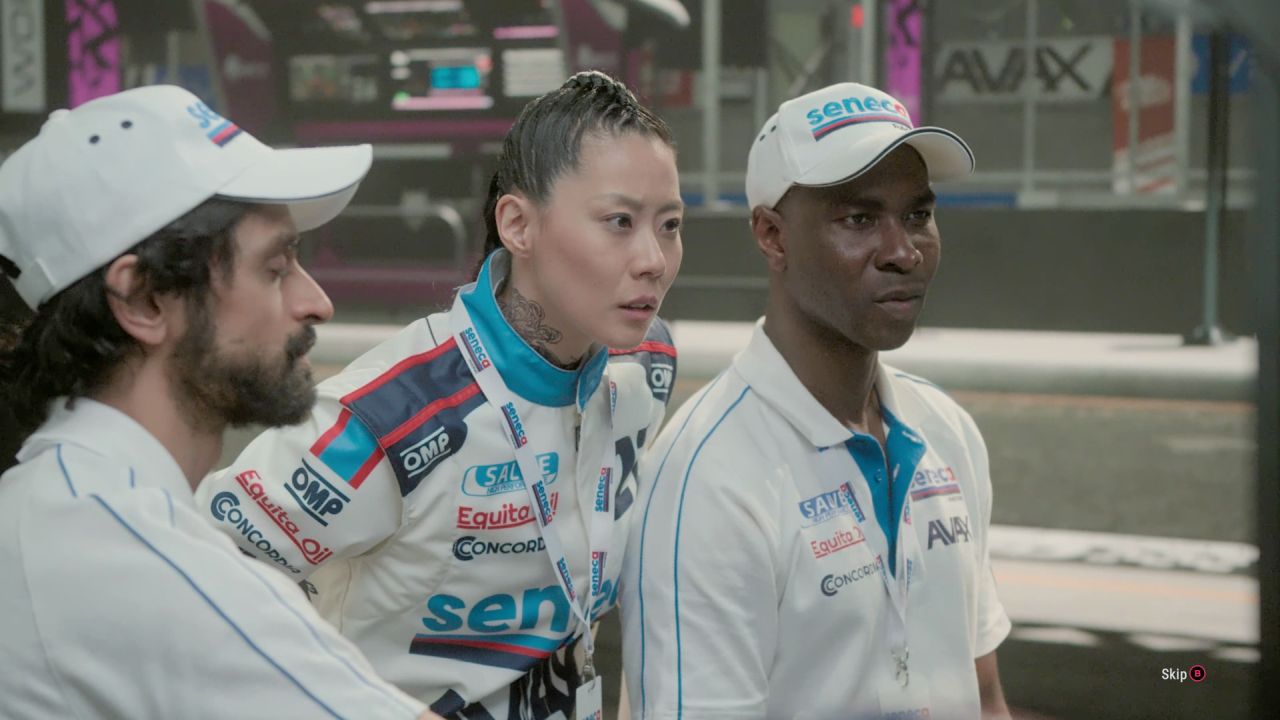
Seneca Racing needs a hero
The story mode in GRID Legends is about an underdog team, Seneca Racing, who has just acquired a new rookie driver: you (aka Driver 22). It is told in a documentary style with live-action video interviews, and these short clips appear between every few races. At first the videos introduce characters, including your teammate and some rivals, most of whom tend to play their clichéd role well enough. Seneca Racing is struggling to compete and a lot is riding on Driver 22 to step up and perform. Initially your teammate is apprehensive, so they must be convinced with your on-track performance. From there you will need to push Seneca into the Pro league and, hopefully, beat the best.
The narrative links with the races fairly well. Sometimes there are in-engine snippets that showcase crashes or controversy. Members of your team will talk during races, and there is also brief commentary just before and after events. Although the story is simple with predictable arcs, it ties everything together nicely. One disappointment is the lack of first-person videos; only at the end do characters give a pep talk directly to the camera. Also, although Driver 22 does the heavy lifting, the story plays out more like your teammate is the protagonist. But despite a few missed opportunities, the six-hour narrative works and the format is ripe for tweaking.
Once you’re done with the story, the career mode offers dozens of hours of racing. Here you ‘manage’ your own team and earn money by winning races. Cars can be bought but many are just unlocked through event completion. The team management side of things is a bit shallow. There are no custom liveries and vehicle upgrades are just basic menu options. You get one teammate and they cannot be replaced, nor do they ever talk to you. They can be upgraded though, to accept more orders (to attack/defend during races) and perform better on track. Only when fully upgraded are they decently comparable to the teammates in the original GRID. The mechanic has upgrades too, although these tend to be boring and just unlock more sponsors or reduce vehicle/repair costs.
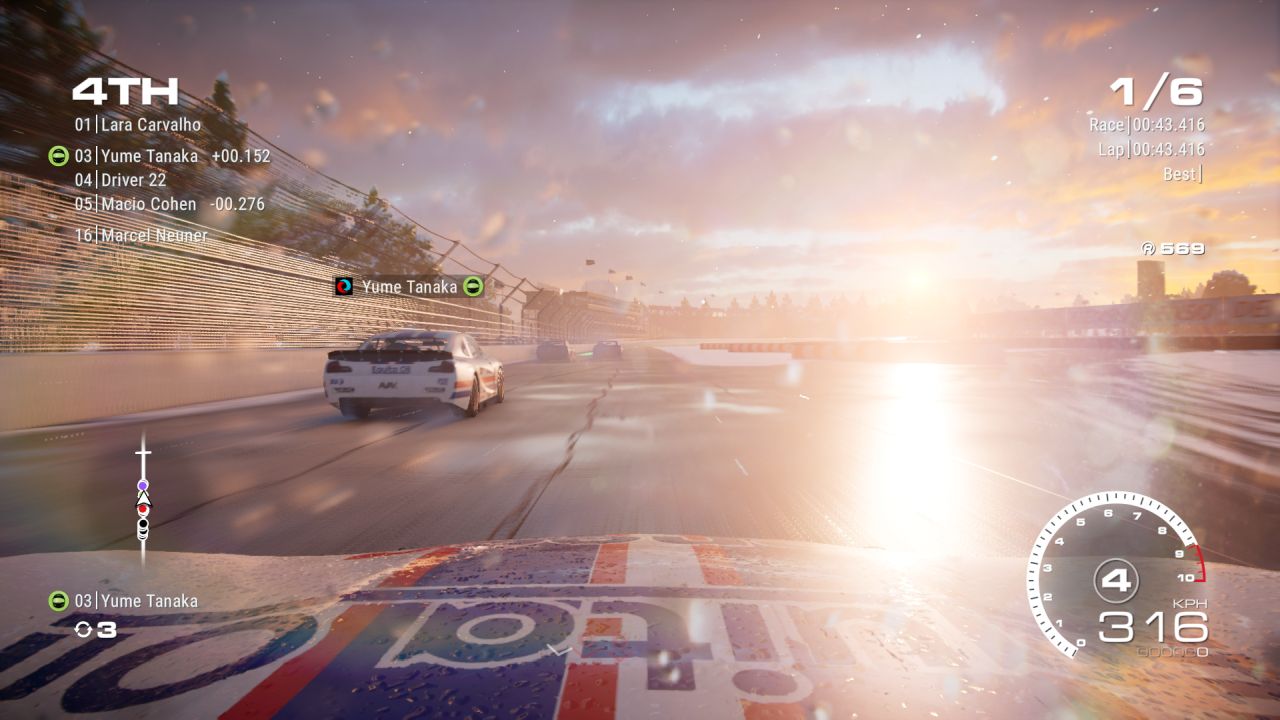
Your teammate is a shining light when fully upgraded
Predictably, the career events are split into challenge tiers (rookie to pro) and with multiple disciplines in each. There are quite a few sub-menus and the game likes to throw you back to the top level so you must dive through them again, and again. There is also too much gated content, with many events requiring vehicle upgrades that require both money and a few dozen turns of the odometer. But, the events are nicely varied in length, vehicle, and type. Circuit racing, time trials, and elimination events are the game’s bread and butter. Drift events return although they are hidden away. Electric events steer more into the arcade realm with a translucent gate placed on the track that grants a speed boost.
Across every discipline, the vehicle handling is solid. When using the controller, it does not stray far from the previous rendition, and that was already quite proficient. There is more of an arcade feel on default settings whether driving muscle cars, touring cars, or stock cars. The stadium trucks have insane suspension that dips when braking and rises under acceleration. This makes for a fun change compared to grounded open-wheel vehicles that are hard to stabilize due to their lighter chassis. Electric vehicles sound a bit weird and seem to take longer to slow down. Unlike the hatches that are zippy and stop on a dime. The handling variety is good and there are still noticeable differences when driving across surface types and road perturbations.
The best part of racing is that it is exciting, reminiscent of the original title. Most races put you at the back of the pack so you must weave through the field, which is where the series excels. There is a fine balance between pushing early and waiting for an opening. Thankfully the flashback rewind feature makes those overtakes a bit easier. The difficulty of the AI drivers is well turned, without much unfairness or obvious rubber-band behavior. They’re wonderfully stubborn at holding the line and so it’s satisfying to finally thread the needle or pass half the field on that first corner. On Expert they proved to be an awesome challenge in the short 3-5 lap races, but race length can be increased (up to 5 times longer) if needed.
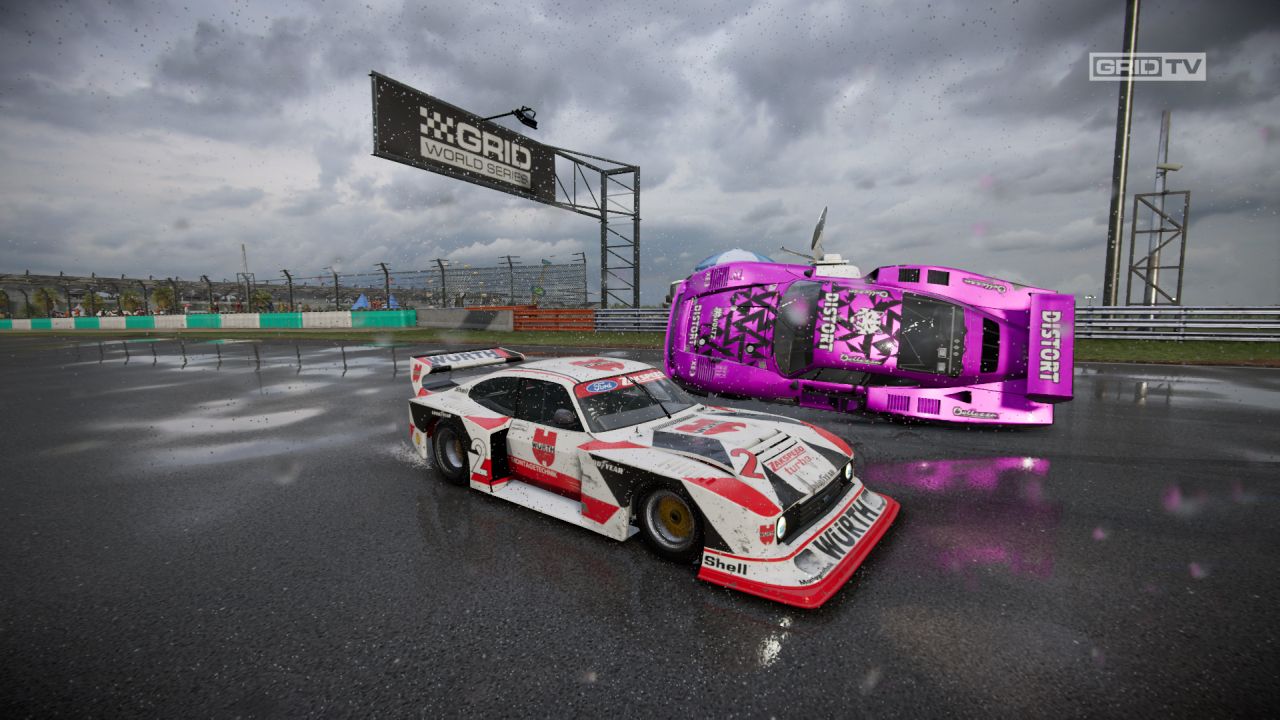
Races feature a lot more accidents
For the first time in the series since the original, there is some great drama on track. Cars flip over or lose tires with decent regularity, and that also applies to your own vehicle if you crash. AI drivers bump into walls or each other, creating new obstacles. There is just more variation in what will happen on the road, and so it makes for a constantly interesting race. Starting from last place in elimination races offered a continuous adrenaline rush because of the battle to remain ahead of the last two vehicles that get knocked out every 20 seconds. Circuit races often had epic crashes on the final lap too, which is due to a lot of systems working in unison.
As you crash through the field, it is likely you will make some nemeses. Bump a driver enough and they become ultra aggressive, just like in the previous game. No longer merely content to hold the line, a nemesis will shove you into a barrier. These nemeses are a cool additional challenge, but as you progress through the career they can start to become annoying. The AI drivers never relinquish their hatred, so racing against 8 nemeses became commonplace in the Pro league. And since they defend better and seek contact, the nemesis system is self-perpetuating. Maybe if there was a way to clear these nemeses, with good old-fashioned bribery or challenges, it would have made the career less of a showcase of everybody that hates you.
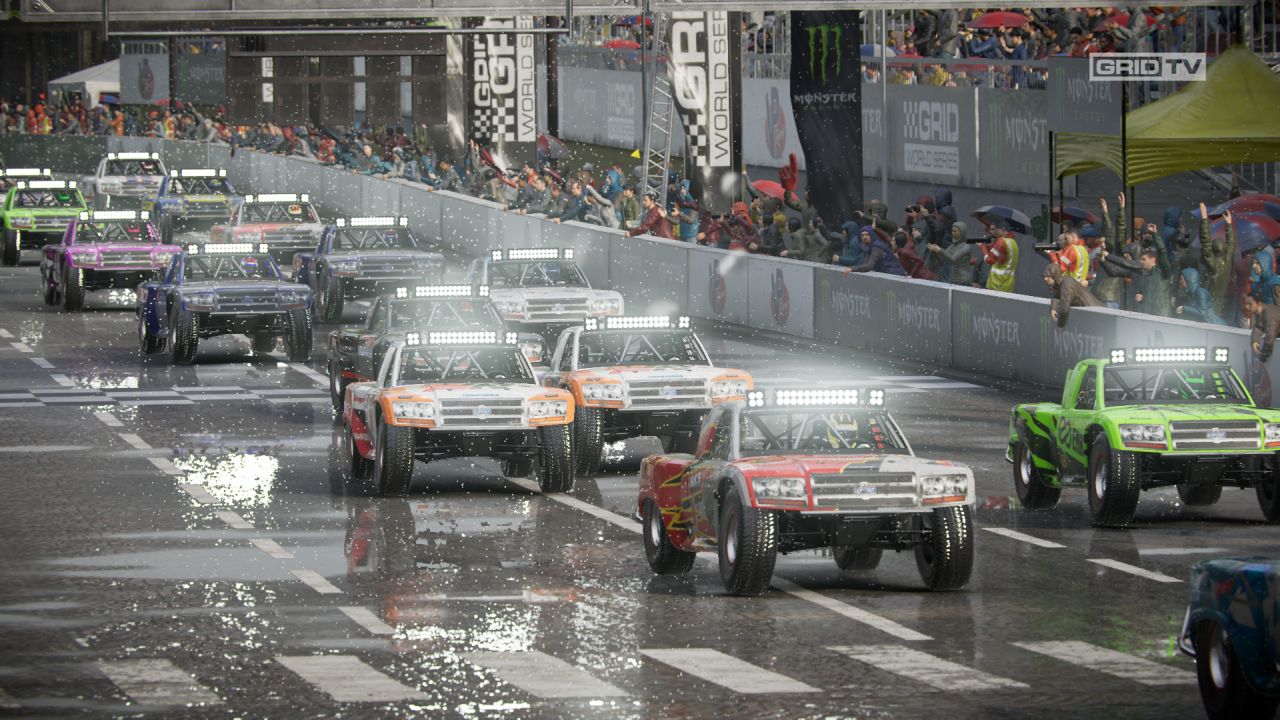
Try to weave through the field without making a nemesis
To help the career remain fresh, there are a good number of tracks. With over 20 locations, and many routes within each, the content is satisfactory and better than what the last game had at launch. All tracks have a time-of-day and weather setting, which is nice and does change racing conditions when the blinding sun is right in your eye, or water spray makes it hard to see the corner. Unfortunately most tracks are returning ones. Chicago, San Francisco, Dubai, Paris, Okutama, Barcelona, and Brands Hatch will be muscle-memory familiar to veterans. So the game occasionally struggles to differentiate itself. However, it was still great to see a visually upgraded version of the Yokohama Docks that last appeared in 2008. There are a few brand new tracks here too; both the Moscow and London street tracks are excellent, with cool backdrops featuring the Red Square and Big Ben.
Once you’re familiar with the courses, it might be time to jump online. The multiplayer has crossplay and on PC there is access to friends on both the Steam and EA platforms (an EA account is required). There is also a new quick race feature, which usually drops you into a live race and lets you take over a random AI driver. It’s painful to take control of the last place competitor with one lap left, but that is far less demoralizing than taking over the leader and crashing out immediately. The randomness of quick race is a small price to pay for more racing per minute. Unfortunately there is still too much waiting, with long timers before races, after races, after the podium, in the lobby, and before loading into matches. Despite the extra time sink, online racing works fine, with accurate enough collisions to make those kamikaze drivers happy as they ruin it for everybody on the first corner.
While nearly everything is a step up from the previous game, visuals are mostly on the same level. Destruction is still fairly muted although carnage is preserved; discarded fenders and felled tire-walls remain on track throughout the whole race. The wet-weather effects are nice, again, but rain is just torrential and snow does not accumulate. Most of the cars look good, although some interiors lack detail and liveries need a bump in resolution because there is aliasing. The good news of these merely pleasing visuals is that the game runs great with only a few rare framerate drops.
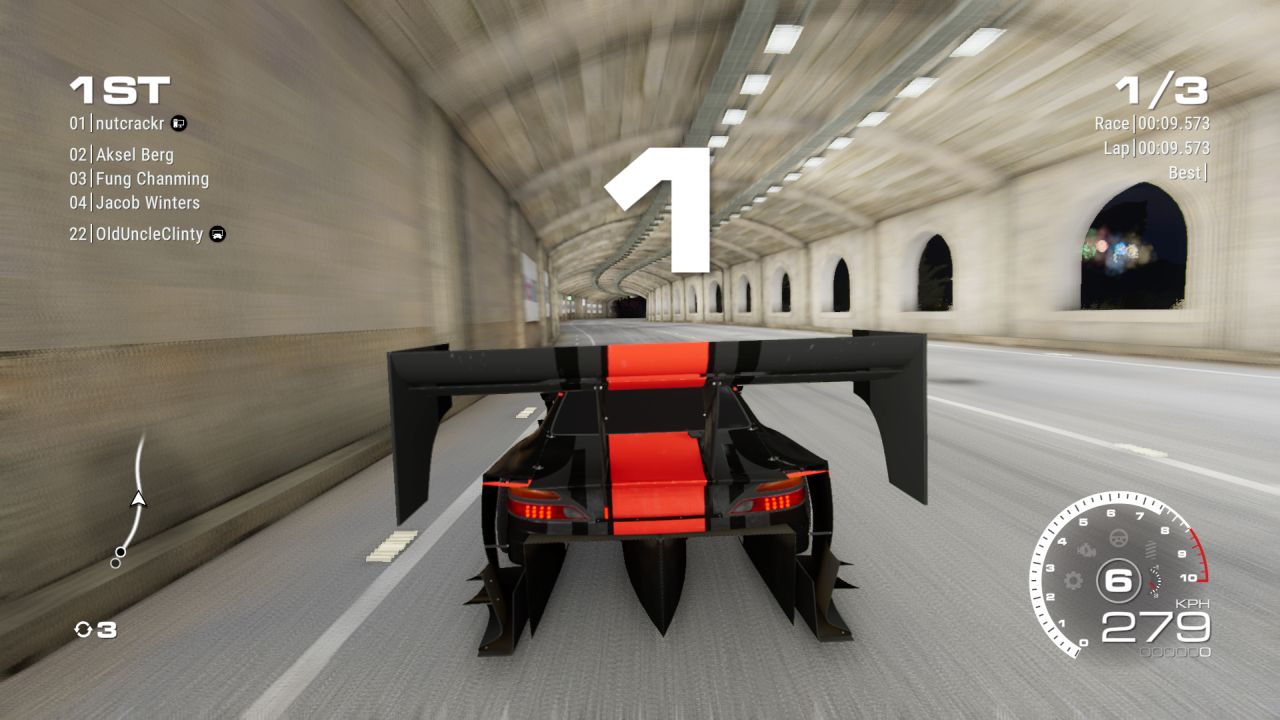
If you’re interested in the story mode, watch out for spoilers
GRID Legends has rediscovered the forward momentum that the franchise has been missing in recent years. With a concise and simple off-track narrative, the racing is well connected in the story mode. The on-track action is good too, with adequate variety, good AI competitors, and a decent track roster. Despite having a lot of recycled tracks, the racing is generally exciting due to dramatic accidents and tight encounters. There are more memorable races in just a few hours of driving than could be found in the entirety of the previous two games combined. And the online portion is fairly strong, despite some unnecessarily long waits. GRID Legends might not be the best in the series but it makes me excited to see what will happen next.
